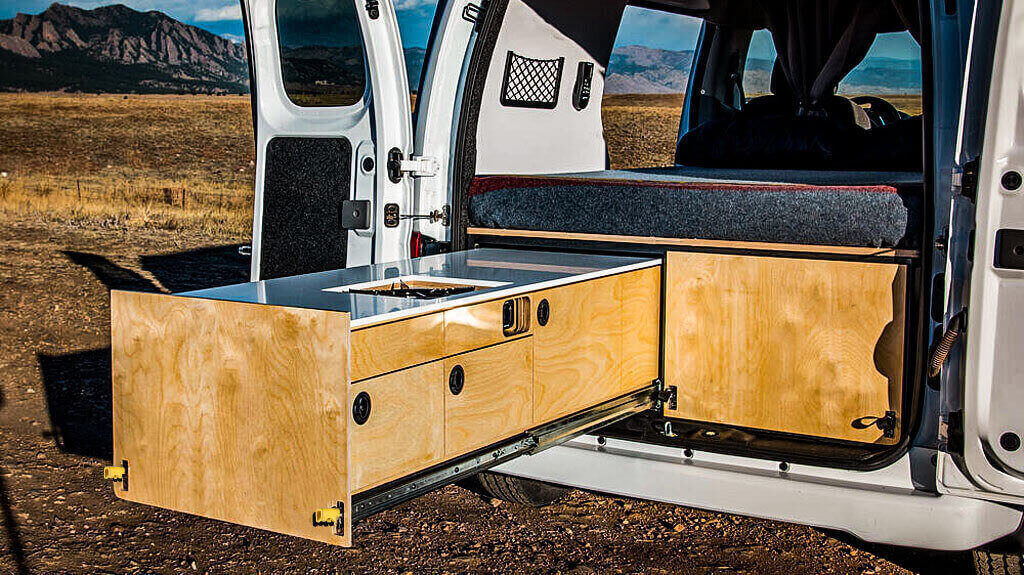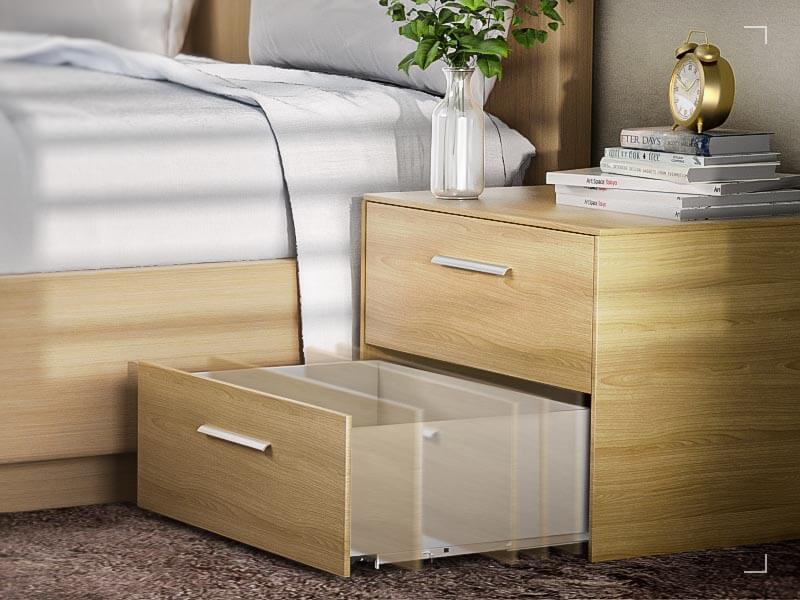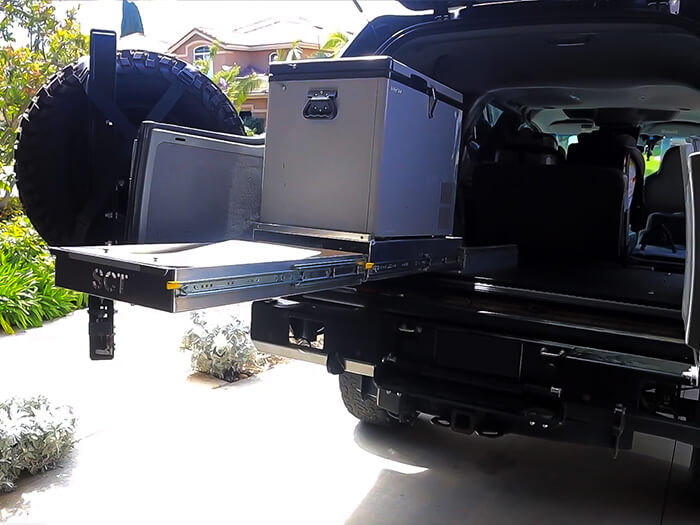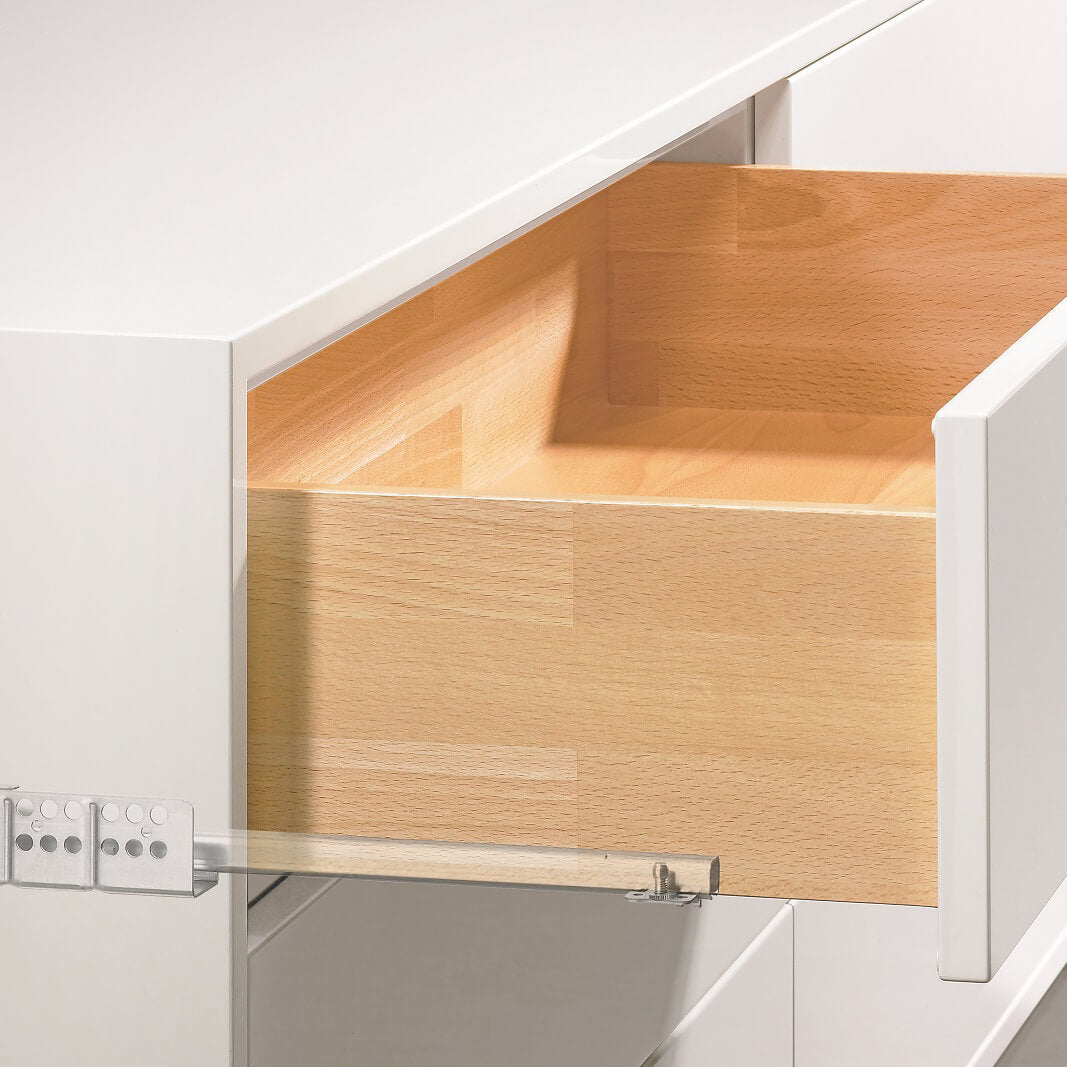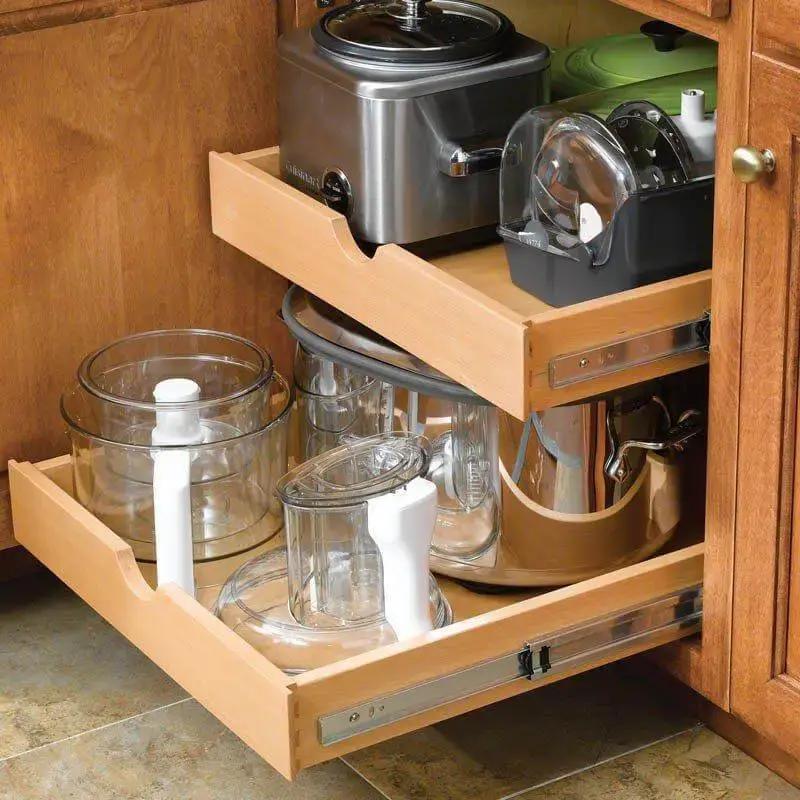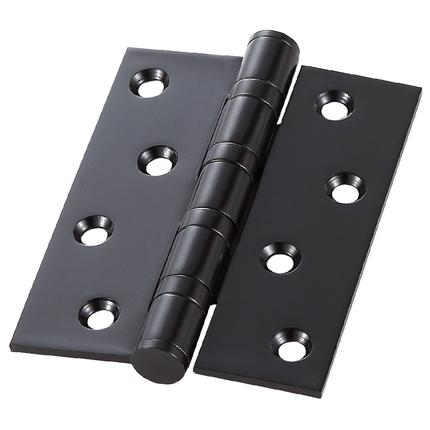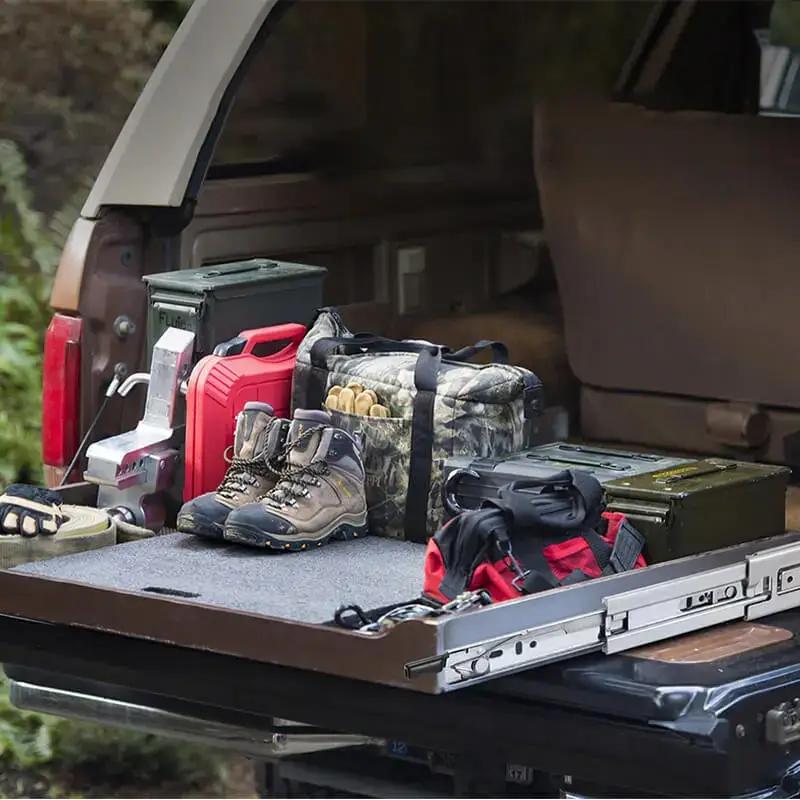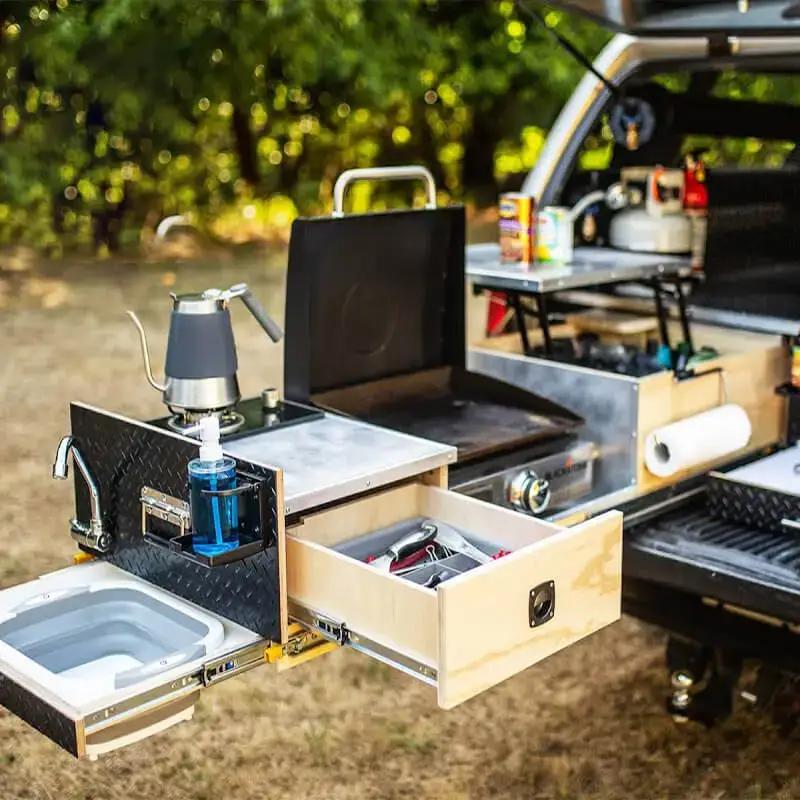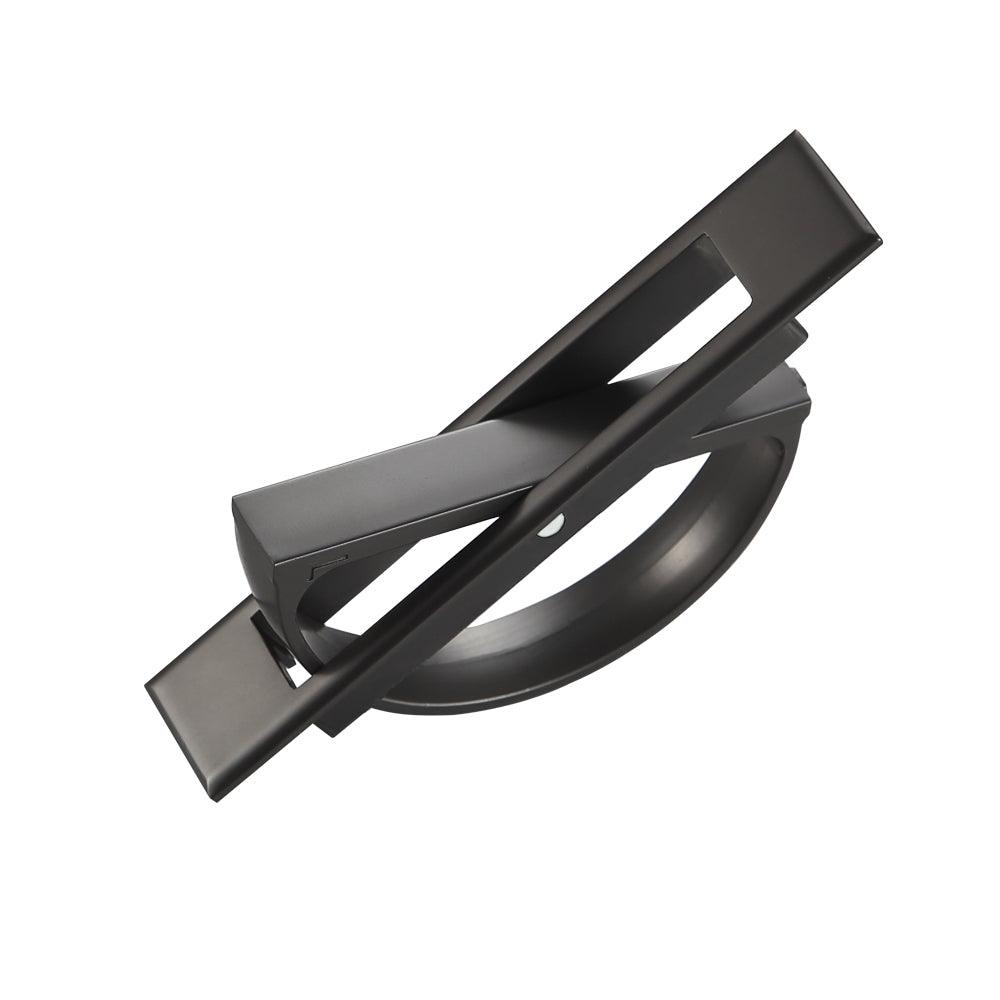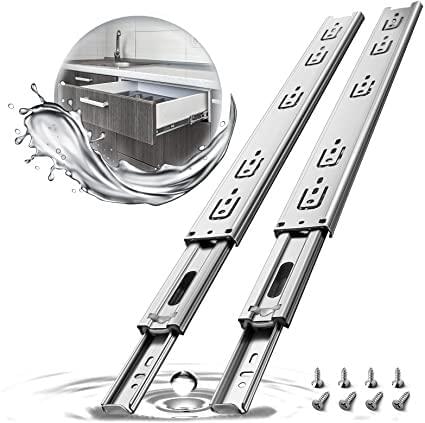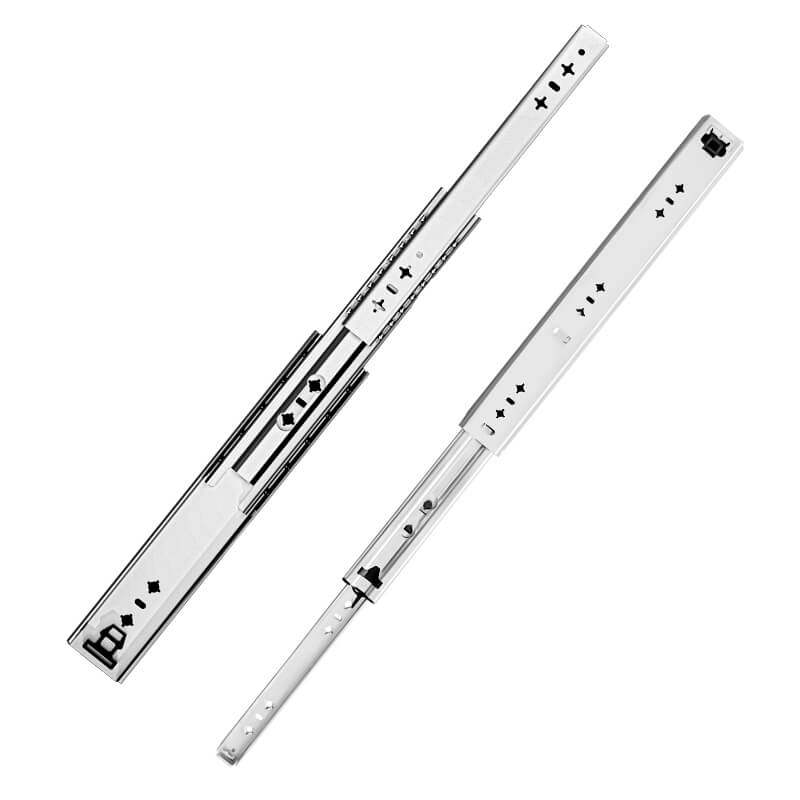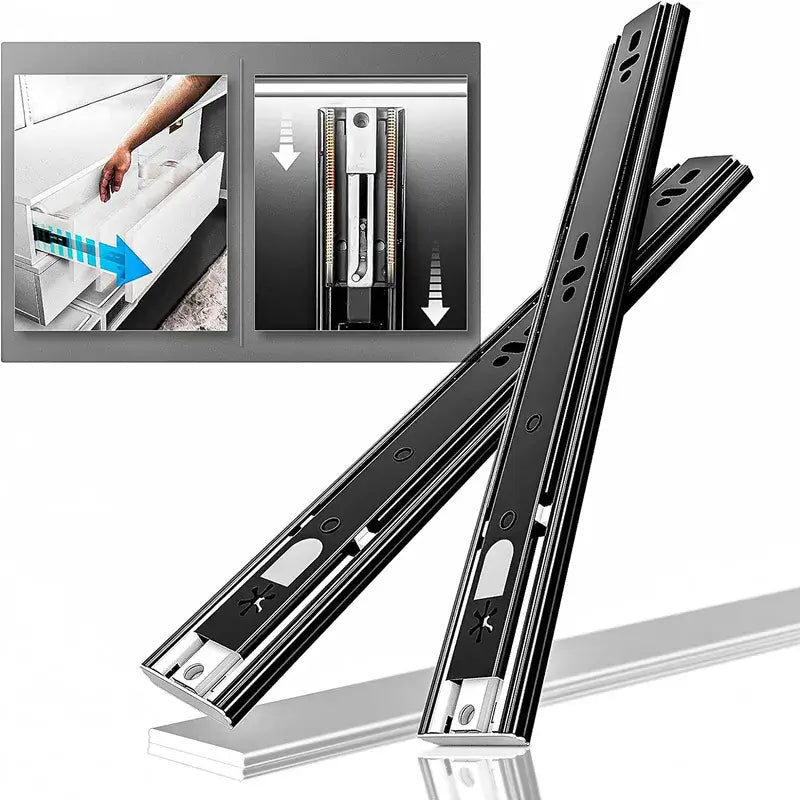Are you tired of struggling with sticky or misaligned drawers? Installing bottom mount drawer slides can be the solution to your frustrations. These essential components ensure smooth gliding motion and provide optimal support for your drawers. In this comprehensive guide, we will walk you through the stepbystep process of installing bottom mount drawer slides. By following these instructions, you'll transform your cabinets and furniture into wellorganized, efficient spaces. Get ready to say goodbye to clunky drawers and hello to effortless access and improved functionality!
1.Tools and Materials Needed
2.Preparing for Installation
3.Cleaning Before Installation
4.Installing the Bottom Drawer Slide
5.How to install bottom drawer slides video
6.Regular Maintenance of Drawer Slides
7.Best Lubricant for Metal Drawer Slides
8.Frequently Asked Questions
9.Conclusion
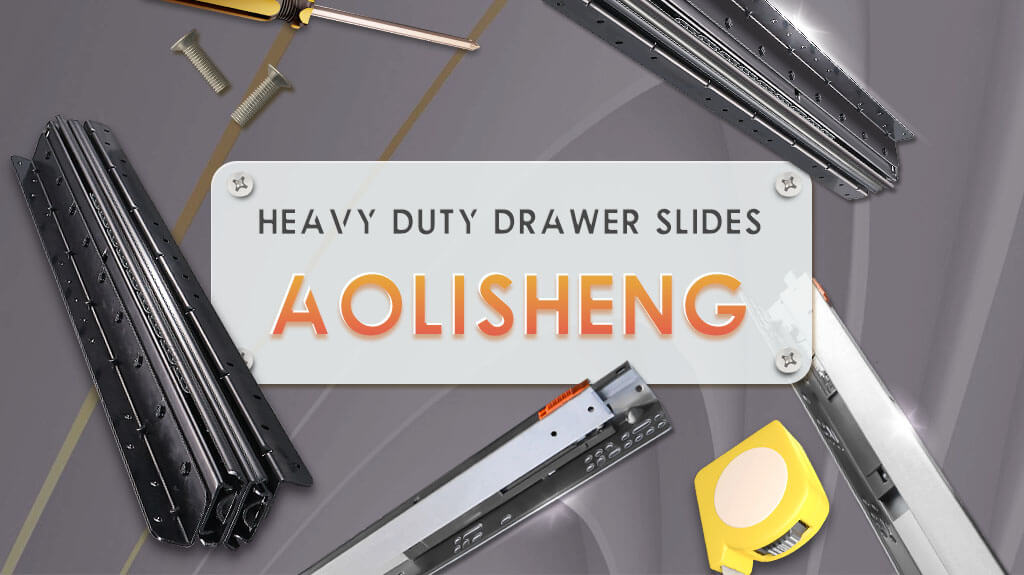
1.Tools and Materials Needed
Bottom Mount Drawer Slides a List of Tools and Materials Required for the Installation Process.
Before you begin the installation process, make sure you have the following tools and materials ready:
Tools:
Screwdriver (Phillips or flathead, depending on the screw type)
Measuring tape or ruler
Pencil or marker for marking
Level for ensuring proper alignment
Optional: Drill for creating pilot holes (if necessary)
Materials:
Bottom mount drawer slides (appropriate size and quantity for your project)
Screws (check the manufacturer's instructions for recommended screw sizes and types)
Having these tools and materials readily available will make the installation process smoother and more efficient. Take the time to gather everything before you start, ensuring you have the right components to successfully install your bottom mount drawer slides.
2.Preparing for Installation
A. Removing the Old Drawer Slides (if applicable)
Explain the steps to remove any existing drawer slides.
If you are replacing old drawer slides, it's important to remove them before installing the new ones. Follow these steps to remove the old drawer slides:
1. Open the drawer fully: Pull the drawer out until it reaches its maximum extension.
2. Locate the release mechanism or screws: Depending on the type of drawer slides, you may need to look for a release mechanism or screws holding the slides in place.
3. Remove the screws or release the mechanism: If screws are present, use a screwdriver to unscrew them and detach the slides from the cabinet and drawer. If there is a release mechanism, follow the manufacturer's instructions to disengage the slides from the drawer and cabinet.
4. Repeat the process for all sides of the drawer: Most drawers have two slides, one on each side. Ensure that you remove both slides completely before proceeding with the installation of the new bottom mount drawer slides.
B. Measuring and Marking
how to accurately measure the drawer and cabinet to determine the correct slide placement.
Proper measurements are crucial to ensure the correct placement and alignment of your bottom mount drawer slides. Follow these steps to accurately measure and mark the drawer and cabinet:
1. Measure the length, width, and height of the drawer box: Use a measuring tape or ruler to measure the dimensions of the interior space of the drawer box. Record these measurements for reference during the installation process.
2. Measure and mark the desired position of the slides inside the cabinet: Consider the clearance requirements and the desired positioning of the drawer within the cabinet. Mark the measurements on the sides of the cabinet where the slides will be installed. Use a pencil or marker to make clear and visible marks.
3. Use a level to ensure the marks are horizontally aligned: Place a level on the marked positions to ensure they are horizontally aligned. Adjust the marks if needed to ensure level placement of the drawer slides.
Taking accurate measurements and making precise markings will ensure that the bottom mount drawer slides are installed in the correct position, resulting in smooth and properly aligned drawers.
3. Cleaning Before Installation
A. Removing Dust and Debris
the importance of cleaning the cabinet and drawer surfaces before installing the bottom mount drawer slides.
Before proceeding with the installation of bottom mount drawer slides, it's essential to ensure that the surfaces of the cabinet and drawer are clean and free from dust and debris. Cleaning the surfaces will not only improve the adhesion of the slides but also prevent any obstructions that may hinder the smooth operation of the drawers. Follow these steps to remove dust and debris:
1. Empty the cabinet: Remove all items from the cabinet to have clear access to the surfaces.
2. Use a soft cloth or brush: Gently wipe or brush the interior surfaces of the cabinet and the bottom surface of the drawer to remove any dust, dirt, or debris.
3. Pay attention to corners and edges: Dust and debris tend to accumulate in corners and edges. Use a small brush or a cloth wrapped around your finger to clean these areas thoroughly.
4. Vacuum or use compressed air (optional): For more thorough cleaning, you can use a vacuum cleaner with a soft brush attachment or compressed air to remove any remaining dust or debris from hardtoreach areas.
By ensuring a clean surface, you'll create an optimal environment for the installation of bottom mount drawer slides, promoting smooth operation and longevity of the hardware.
B. Surface Preparation (Optional)
guidance on additional surface preparation steps, such as sanding or applying adhesivebacked tape.
In some cases, additional surface preparation may be required to enhance the installation of bottom mount drawer slides. Consider the following optional steps:
1. Sanding the surfaces (if needed): If the cabinet or drawer surfaces have rough spots, splinters, or imperfections, lightly sand them using finegrit sandpaper. This will create a smoother surface for better slide attachment.
2. Applying adhesivebacked tape (if needed): In situations where the drawer slides require extra grip or if the surfaces are slippery, you can apply adhesivebacked tape to the contact areas of the slides. This will provide additional traction and stability.
Note: These additional steps are not always necessary but can be beneficial depending on the condition of the surfaces and the specific requirements of the drawer slides.
By cleaning the surfaces and considering optional surface preparation, you'll create an ideal foundation for the installation of bottom mount drawer slides, ensuring a secure and smooth operation of your drawers.
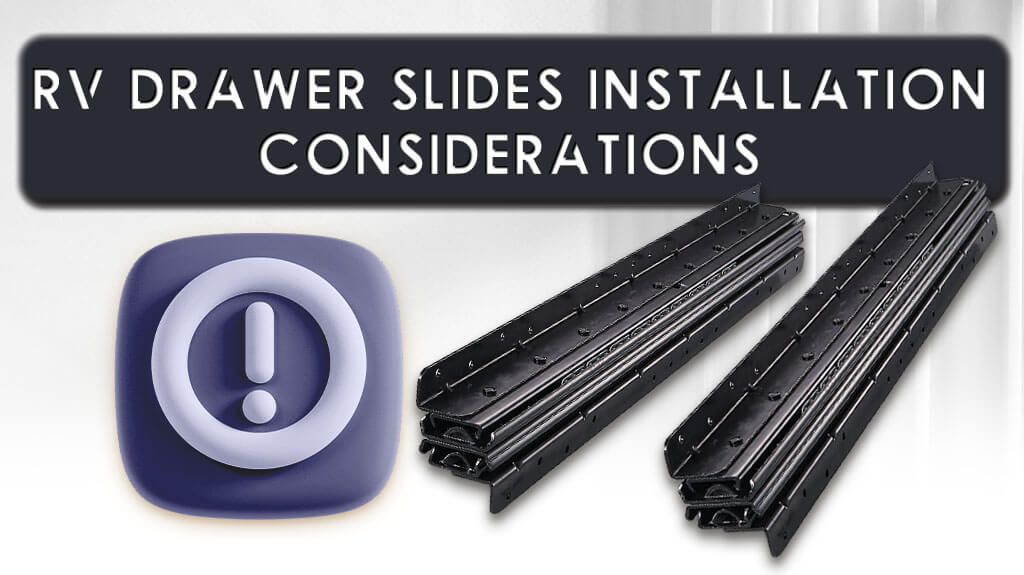
4.Installing the Bottom Drawer Slide
Step 1: Prepare the Cabinet
Empty the contents of the cabinet to provide easy access during installation.
Turn the cabinet upside down to facilitate the attachment of the drawer slides.
Step 2: Position the Drawer Slides
Align the first drawer slide with the marked position on one side of the cabinet. The slide should be positioned horizontally and vertically level.
Secure the slide to the cabinet using screws. Start by attaching one or two screws to hold the slide in place.
Step 3: Align and Attach the Second Slide
Align the second drawer slide with the corresponding mark on the opposite side of the cabinet.
Ensure that the slide is parallel and level with the first slide.
Attach the slide to the cabinet using screws, starting with one or two screws.
Step 4: Test the Slides
Gently slide the drawer in and out to test the movement and alignment of the slides.
Make any necessary adjustments to ensure the drawer slides smoothly without sticking or misalignment.
Step 5: Prepare the Drawer
Place the drawer upside down on a stable surface.
Position the corresponding slides on the bottom edges of the drawer sides, aligning them with the installed cabinet slides.
Step 6: Attach the Slides to the Drawer
Secure the slides to the drawer using screws. Start with one or two screws per slide to hold them in place.
Check the alignment of the drawer with the installed cabinet slides, ensuring they are parallel and level.
Adjust the position of the slides if needed.
Step 7: Test the Drawer
Carefully turn the drawer rightside up and place it inside the cabinet.
Slide the drawer in and out multiple times to verify smooth movement and proper alignment.
Make any necessary adjustments to ensure the drawer operates smoothly.
Step 8: Secure the Drawer Slides
Once the drawer is operating correctly, tighten all the screws on both the cabinet and drawer slides securely.
By following these steps, you'll be able to install bottom mount drawer slides correctly, ensuring smooth and efficient operation of your drawers.
5.How to install bottom drawer slides video
6.Regular Maintenance of Drawer Slides
Proper maintenance of drawer slides is crucial to ensure their longevity and smooth functionality. Here are some tips for regular maintenance:
1. Cleaning:
Regularly clean the drawer slides and surrounding areas to remove dust, dirt, and debris that can affect the smooth movement of the drawer. Use a soft cloth or brush to wipe or brush away any buildup.
2. Lubrication:
Apply a lubricant specifically designed for drawer slides to keep them operating smoothly. Lubrication reduces friction and prevents sticking or squeaking. Be sure to use a lubricant recommended by the slide manufacturer to avoid any damage to the slides.
Apply the lubricant sparingly along the length of the slides, both on the cabinet and the drawer side. Use a cloth or your fingers to spread the lubricant evenly.
After applying the lubricant, open and close the drawer several times to distribute it across the slides.
3. Check for Loose Screws:
Regularly inspect the screws that secure the drawer slides to the cabinet and drawer. If you notice any loose screws, tighten them carefully to ensure the slides remain securely in place.
Avoid overtightening the screws, as it can lead to stripped holes or affect the smooth movement of the drawer. Use a screwdriver or drill at an appropriate torque setting.
4. Adjustments:
Over time, drawer slides may shift or become misaligned. If you notice the drawer is not sliding smoothly or is misaligned, make necessary adjustments to the slides.
Refer to the manufacturer's instructions to understand how to adjust the specific type of drawer slides you have installed.
Typically, adjustment mechanisms involve loosening screws, making the necessary alignment changes, and retightening the screws.
5. Inspect for Damage:
Regularly inspect the drawer slides for any signs of damage, such as bent or broken components. If you notice any damage, it's important to replace the affected slides promptly to maintain the functionality and stability of the drawers.
Remember to consult the specific maintenance guidelines provided by the manufacturer of your drawer slides, as different types and brands may have specific recommendations. By following these maintenance practices, you can keep your drawer slides in optimal condition and ensure the smooth operation of your drawers for years to come.

7.Best Lubricant for Metal Drawer Slides
When it comes to lubricating metal drawer slides, it's important to choose a lubricant that is specifically designed for use on metal surfaces. Here are some popular options:
1. White Lithium Grease: White lithium grease is a versatile lubricant suitable for various metal applications, including drawer slides. It provides excellent lubrication, reduces friction, and helps prevent corrosion. It typically comes in aerosol or tube form, making it easy to apply.
2. Siliconebased Lubricants: Siliconebased lubricants are another good option for metal drawer slides. They offer smooth and longlasting lubrication, and their nonsticky formula helps repel dirt and dust. Silicone sprays are commonly available and can be applied easily.
3. Teflonbased Lubricants: Teflonbased lubricants, often referred to as dry lubricants, are another popular choice for metal drawer slides. They provide a dry, frictionreducing coating that doesn't attract dust or dirt. Teflonbased lubricants are available as sprays or in liquid form.
When selecting a lubricant, consider the specific needs of your drawer slides and any manufacturer recommendations. It's important to choose a lubricant that is compatible with metal surfaces and won't damage or degrade the slide components.
Before applying any lubricant, thoroughly clean the drawer slides to remove dirt or debris. Follow the instructions provided by the lubricant manufacturer for the proper application method and quantity. Apply the lubricant sparingly and evenly along the length of the slides, both on the cabinet and drawer side. After lubrication, open and close the drawer several times to distribute the lubricant evenly and ensure smooth operation.
Remember to periodically clean and reapply lubricant as needed to maintain optimal performance of your metal drawer slides.
8.Frequently Asked Questions
What is the difference between bottommount and side mount drawer slides?
Bottommount and sidemount drawer slides are two common types of hardware used to facilitate the smooth opening and closing of drawers. While both serve the same purpose, there are distinct differences between them.
Bottommount drawer slides, as the name suggests, are installed underneath the drawer and mounted to the bottom edge. These slides are typically concealed when the drawer is closed, providing a cleaner aesthetic. They offer a stable and reliable support system for the drawer, allowing it to glide smoothly. Bottommount slides are often used in modern and contemporary cabinetry designs.
On the other hand, sidemount drawer slides are installed on the sides of the drawer and cabinet. These slides are visible when the drawer is open, providing a traditional look. Sidemount slides offer easy access to the full width of the drawer and can support heavier loads compared to bottommount slides. They are commonly used in various furniture styles and are suitable for both residential and commercial applications.
Can you use side mount drawer slides on the bottom?
No, sidemount drawer slides are not designed or recommended to be used on the bottom of a drawer. Sidemount drawer slides are specifically designed to be installed on the sides of the drawer and cabinet, providing support and allowing for smooth horizontal movement.
To ensure optimal performance and functionality, it is important to use the appropriate type of drawer slides for their intended purpose. Bottommount drawer slides are specifically designed to be installed on the bottom of the drawer and cabinet, providing the necessary support and allowing for smooth vertical movement. Therefore, it is recommended to use bottommount slides for the bottom installation of drawers rather than attempting to use sidemount slides inappropriately.
9.Conclusion
In conclusion, installing bottom mount drawer slides is a practical and efficient way to enhance the functionality of your drawers. By following the stepbystep installation process, you can ensure smooth and reliable operation for easy access to your drawer contents. Remember to gather all the necessary tools and materials, prepare the surfaces properly, and carefully attach the slides to the cabinet and drawer.
performing regular maintenance, and selecting the suitable type of drawer slides, you can enjoy smooth, efficient, and reliable drawer operation. Whether you are upgrading existing drawers or installing new ones, bottom mount drawer slides will undoubtedly enhance the overall functionality and convenience of your cabinetry.

